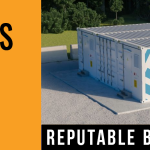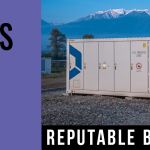 Schneider Electric has won a $5.2 million contract to provide a microgrid for the nation’s second busiest port, the Port of Long Beach in the city of Long Beach, California.
Schneider Electric has won a $5.2 million contract to provide a microgrid for the nation’s second busiest port, the Port of Long Beach in the city of Long Beach, California.
One of the giants in the microgrid arena, Schneider will design, engineer and build the $7.1 million project. Part of the funding — $5 million – comes from a California Energy Commission grant.
Microgrids provide a way for ports to minimize use of diesel generators, their common form of power backup. Ports are seeking cleaner options as they pursue new energy and environmental goals. For example, the Port of Long Beach — which calls itself ‘The Green Port’ — is working to become a zero-emission operation.
“Ensuring a stable supply of energy is crucial to the zero-emissions future the Harbor Commission envisions for the Port of Long Beach,” said Tracy Egoscue, president of the Long Beach Board of Harbor Commissioners.
Because of their ability to island, microgrids offer a way for ports to secure electricity supply even if a power outage occurs on the central grid. Reliable electricity is crucial to major ports given the volume of business they do. The 3,200-acre Port of Long Beach handles $194 billion in cargo per year. It has 140 shipping lines with connections to 217 seaports.
The microgrid will bolster energy resilience for the port’s critical response facility, the Joint Command and Control Center (JCCC), which functions as the port’s hub for security.
“Across all industries and public entities, there is increasing demand to bolster energy resilience to support business continuity at critical facilities. The plans of the Port of Long Beach illustrate the foresight required to augment ongoing electrification efforts with resilience,” said Mark Feasel, vice president, smart grid & microgrid, Schneider Electric.
As part of the project, Schneider will help compile and analyze 12 months of performance data to ensure the microgrid moves the port towards its energy resilience goals.
read more
 Duke Energy’s advancement of battery energy storage technologies in the Carolinas includes $500 million of projects in the company’s 15-year forecast – continuing the company’s industry-leading deployment of the technology.
Duke Energy’s advancement of battery energy storage technologies in the Carolinas includes $500 million of projects in the company’s 15-year forecast – continuing the company’s industry-leading deployment of the technology. As renewable penetration grows, the need for energy storage grows as well. However, existing storage technologies may not be able to meet that need.
As renewable penetration grows, the need for energy storage grows as well. However, existing storage technologies may not be able to meet that need. SARATOGA SPRINGS — On Sept. 26 Key Capture Energy LLC, held a groundbreaking ceremony for the KCE NY 1 facility. The KCE NY 1 facility is a 20 megawatt (MW) utility-scale battery storage project, located at the Luther Forest Technology Campus. The Groundbreaking took place at 30 Substation Rd. in Saratoga Springs.
SARATOGA SPRINGS — On Sept. 26 Key Capture Energy LLC, held a groundbreaking ceremony for the KCE NY 1 facility. The KCE NY 1 facility is a 20 megawatt (MW) utility-scale battery storage project, located at the Luther Forest Technology Campus. The Groundbreaking took place at 30 Substation Rd. in Saratoga Springs. CPS Energy recently broke ground on their first solar energy and battery storage project in Texas.
CPS Energy recently broke ground on their first solar energy and battery storage project in Texas. We know energy storage is coming. The question is: How much and how fast? Tesla showed us that they’d rather build cars versus energy storage installations, and that makes sense since more than 90% of their revenue is from cars. And Bloomberg recently reminded us that the whole of the industry is in a situation of greater demand than supply. Nonetheless, the potential is there and the manufacturing capacity is growing immensely.
We know energy storage is coming. The question is: How much and how fast? Tesla showed us that they’d rather build cars versus energy storage installations, and that makes sense since more than 90% of their revenue is from cars. And Bloomberg recently reminded us that the whole of the industry is in a situation of greater demand than supply. Nonetheless, the potential is there and the manufacturing capacity is growing immensely.



